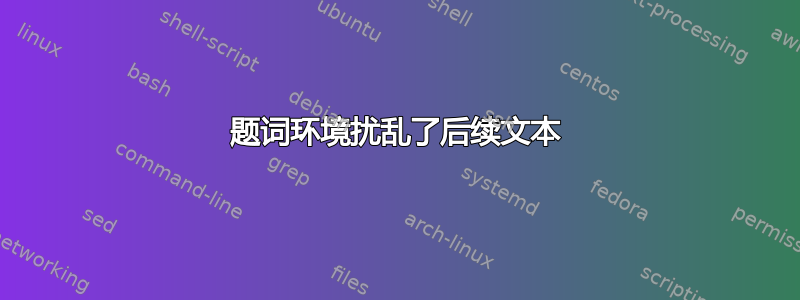
\documentclass[a4paper]{report}
\usepackage{epigraph}
\setlength\epigraphwidth{0.93\textwidth}
\setlength{\epigraphrule}{0pt}
\begin{document}
Consequently, under application of the aforementioned criterion of physical reality:
\epigraph{(I) Only one of the corresponding properties can be 'real' at any time.}
Subsequently, the focus is shifted onto an entangled state of two particles that have seized to interact and are far removed from another.
\end{document}
\documentclass[a4paper]{report}
\usepackage{epigraph}
\setlength\epigraphwidth{0.93\textwidth}
\setlength{\epigraphrule}{0pt}
\begin{document}
Consequently, under application of the aforementioned criterion of physical reality:
\epigraph{(I) Only one of the corresponding properties can be 'real' at any time.}
\noindent Subsequently, the focus is shifted onto an entangled state of two particles that have seized to interact and are far removed from another.
\end{document}
答案1
该epigraph包装的设计目的绝不是将题词放在段落中间。题词本质上构成了其自己的显示“段落”。
我已经修改了你的 MWE 来显示\paragraph通常如何使用。
% epigraphprob.tex SE 546919
\documentclass[a4paper]{report}
\usepackage{epigraph}
\setlength\epigraphwidth{0.93\textwidth}
\setlength{\epigraphrule}{0pt}
\epigraphnoindent
\begin{document}
Consequently, under application of the aforementioned criterion of
physical reality:
\chapter{One}
\epigraph{(I) Only one of the corresponding properties can be 'real'
at any time.}{}
Subsequently, the focus is shifted onto an entangled state of two particles
that have seized to interact and are far removed from another.
\end{document}
两条评论:\epigraphnoindent序言中的停止了跟在分部标题后面的段落之后的文本的缩进(\chapter在上面);\paragraph采用两个参数,即文本和来源 --- 您只提供了文本。
我认为你最好使用类似quote环境的东西。




